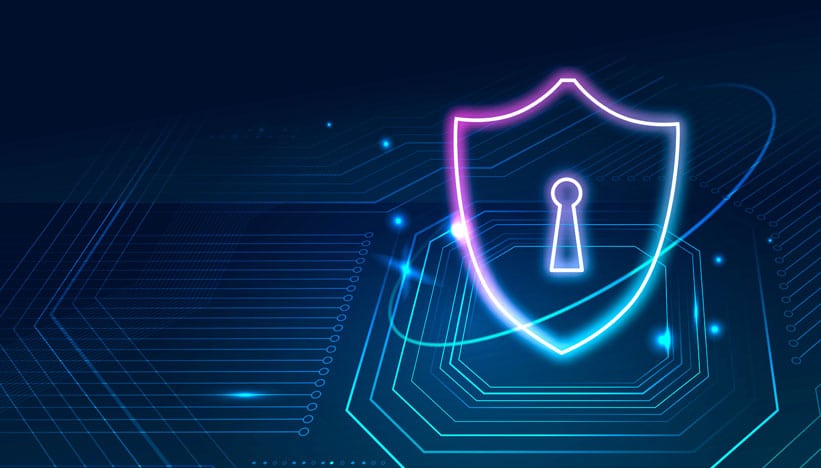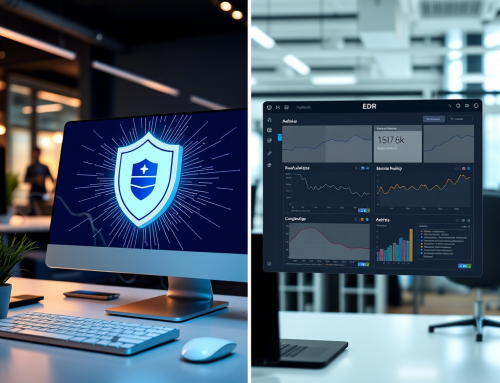Modern organizations heavily rely on technology to drive operations, foster communication, and spark innovation. However, with technological advancements, the threat landscape continues to grow, exposing businesses to a myriad of cyberattacks. Among these risks, the weakest points in an organization’s cybersecurity infrastructure are often the most exploited. This detailed guide is designed for cybersecurity learners, aiming to dissect common vulnerabilities, their impact, and the strategies to mitigate them. We’ll also explore real-world use cases to provide actionable insights.
What is the Weakest Link in Organizational Cybersecurity?
Every organization, big or small, has cybersecurity vulnerabilities. However, statistically, the weakest link often lies in human error. Even with the best intentions, employees can inadvertently invite cyber threats through errors such as clicking malicious links, using weak passwords, or misconfiguring internal systems.
Real-World Example:
A phishing email sent to an employee at a financial firm appeared to originate from the IT department. Clicking the link installed ransomware that encrypted critical company data, leading to a week-long shutdown and a loss of $1 million in revenue.
Common Weak Points in Cybersecurity Infrastructure
While vulnerabilities vary across industries and organizations, some common areas are frequently exploited:
1. Human Error
- Cause: Clicking phishing links, poor password management, and falling victim to social engineering attacks.
- Use Case: A global retailer’s employee inadvertently sent sensitive customer data via unsecured email, violating GDPR regulations and resulting in hefty fines.
2. Outdated Software
- Cause: Failing to install the latest updates or relying on systems that have reached end-of-life status.
- Use Case: The 2017 WannaCry attack targeted organizations using outdated Windows operating systems, affecting 200,000 computers across 150 countries.
3. Insider Threats
- Cause: Negligent actions or malicious activities by employees with access to sensitive systems.
- Use Case: A major investment firm experienced a breach when a disgruntled employee exploited admin credentials to leak sensitive information.
4. Third-Party Risks
- Cause: Partners, vendors, or subcontractors with weak cybersecurity practices introducing vulnerabilities.
- Use Case: Target’s 2013 breach, exposing credit card details of 40 million customers, occurred because attackers accessed networks through a third-party HVAC vendor.
5. Lack of Cybersecurity Training
- Cause: Employees unaware of potential threats or how to handle them.
- Use Case: An employee of a healthcare provider unknowingly opened a spear-phishing email, leading to the compromise of thousands of patient records and HIPAA violations.
Consequences of Cybersecurity Weaknesses
The impact of these cybersecurity vulnerabilities can be extensive and damaging to an organization. Key consequences include:
- Data Breaches: Loss or theft of sensitive information, including financial data and IP.
- Financial Loss: Ransomware attacks, business disruption, legal penalties, and the cost of remediation.
- Reputational Harm: Eroding customer trust and loyalty, possibly leading to loss of business.
- Regulatory Penalties: Non-compliance with laws like GDPR, CCPA, or HIPAA can carry significant fines.
Real-World Statistic:
According to IBM’s 2023 Cost of a Data Breach report, the average cost of a data breach globally is $4.45 million.
Practical Strategies to Address Cybersecurity Weaknesses
1. Employee Training and Awareness
Invest in regular employee training to recognize and respond to phishing attempts, ransomware threats, and other attacks.
Tactic:
Conduct phishing simulation tests to evaluate your team’s ability to detect malicious emails.
2. Implement Strong Password and Authentication Policies
Use strong, unique passwords for all systems and implement multi-factor authentication (MFA).
Tool Example:
Platforms like LastPass or Okta can ensure password management and MFA integration.
3. Regular Updates and Patching
Ensure operating systems, software, and plugins are updated with the latest patches to close security gaps.
Use Case:
After suffering an exploit due to unpatched software, a manufacturing firm began enforcing automated patch management, significantly reducing vulnerabilities.
4. Strengthen Endpoint Security
Use endpoint protection tools, such as antivirus software, firewalls, and Endpoint Detection and Response (EDR) solutions.
Tool Example:
EDR platforms like CrowdStrike Falcon offer real-time threat detection and response across all connected devices.
5. Assess Third-Party Vendor Risks
Conduct cybersecurity audits of third-party vendors and enforce strict protocols for data access.
Tactic:
Use third-party risk management tools like Prevalent and RiskRecon to assess vendors.
6. Foster a Culture of Security
Promote a culture where cybersecurity is seen as everyone’s responsibility, not just the IT department’s.
Overcoming Challenges in Cybersecurity Implementation
Implementing effective cybersecurity strategies isn’t without challenges. Here’s how organizations can tackle common hurdles:
- Cost Constraints:
- Approach solution providers offering scalable, cost-effective cybersecurity tools tailored to organizational size and budget.
- Cultural Resistance:
- Create awareness campaigns emphasizing the importance of cybersecurity and its role in protecting both employees and the business.
- Skill Gaps:
- Partner with Managed Security Service Providers (MSSPs) to access expertise and fill resource gaps.
Best Practices to Strengthen Cybersecurity Posture
- Zero Trust Architecture:
- Require all users and devices to verify credentials before accessing systems.
- Comprehensive Disaster Recovery Plan:
- Ensure rapid recovery after an incident, minimizing downtime.
- Conduct Penetration Testing:
- Periodically simulate attacks to identify and rectify vulnerabilities.
- Continuous Monitoring:
- Use tools like SIEM (e.g., Splunk) to detect, analyze, and respond to threats in real time.
Proactive Steps:
- Regularly update incident response plans.
- Conduct quarterly cybersecurity audits.
- Stay informed about emerging threats and trends.
The Importance of Continuous Monitoring and Adaptation
Cybersecurity isn’t a one-and-done deal. Threat actors constantly refine their tactics, forcing organizations to evolve their defenses.
Emerging Trends to Monitor:
- Rise of AI-driven cyberattacks.
- Sophisticated ransomware models targeting critical infrastructure.
- Deepfake technology introducing new phishing methods.
Using advanced analytics tools like Darktrace to monitor for anomalies and foster collaboration among all departments can fortify an organization’s security posture.
Final Thoughts
The weakest link in any organization’s cybersecurity framework often revolves around human factors. However, with the right combination of employee training, effective tools, and proactive policies, organizations can significantly reduce their risks.
For cybersecurity learners, it’s essential to recognize vulnerabilities and explore practical solutions. Start by identifying gaps in your current framework and implementing these best practices.





